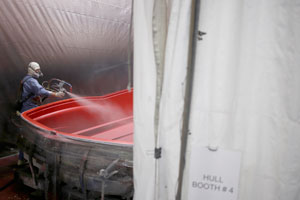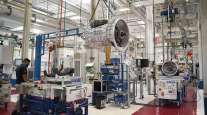Factory Production Drops on Energy Pullback

Factory production unexpectedly declined in May as the slump in energy output deepened.
The 0.2% decrease at manufacturers followed a 0.1% increase in April, figures from the Federal Reserve showed June 15. Total industrial production, which includes mines and utilities, also dropped 0.2%.
Production of consumer energy products declined for a third consecutive month, exacerbating a decrease in other nondurable goods such as foods and chemicals that swamped continued gains among automakers.
The sluggish data signal that a stronger dollar and decrease in fuel prices still are rippling through the economy, holding back American factories.
“The global economic situation is not ideal,” Stephen Stanley, chief economist at Amherst Pierpont Securities in Stamford, Connecticut, said before the report. As a result, “any growth that you see in manufacturing is going to be predominantly driven by domestic demand.”
Manufacturing, which makes up about 75% of total production, was forecast to increase 0.3%, according to the median forecast of economists surveyed by Bloomberg News. April was previously reported as being unchanged.
Total industrial production was projected to rise 0.2%, with estimates ranging from a drop of 0.3% to a 0.6% gain, according to the survey of 82 economists. April data were revised to show a 0.5% drop compared with a previously reported 0.3% decrease.
Capacity utilization, which measures the amount of a plant that is in use, declined to 78.1% in May from 78.3%.
Mining production, including oil drilling, fell 0.3% last month, the fifth consecutive decrease. Drilling and servicing at wells declined 7.9% as companies seek to balance supply with demand amid a global oil glut.
Utility output increased 0.2% in May after falling 3.7%.
Consumer goods production decreased 0.3% last month, led by a 0.7% drop for nondurable goods. Output of durable goods, those made to last at least three years, rose 1.1% as makers of autos and electronics revved up.
Consumers’ appetites for new cars continue to support production. Output of motor vehicles and parts increased 1.7% after rising 2% a month earlier. Excluding autos and parts, factory production declined 0.3% last month after being little changed in April.
“We expect that the U.S. economic growth is regaining momentum in the second quarter,” Yong Yang, senior economist at Dearborn, Michigan-based Ford Motor Co., said on a June 2 sales call. “As the business environment for manufacturing has become more supportive in recent months, manufacturing activity will likely pick up.”
Business equipment production climbed 0.2% in May after a 0.1% decrease the month before. Output of construction materials fell 0.3%.
Other data are at odds with the prolonged slowdown signaled by the Fed’s industrial production report. The Institute for Supply Management’s factory index rose to a three-month high of 52.8 in May from 51.5 in April, figures from the Tempe, Arizona-based group showed earlier this month.
A pickup in bookings and the strongest reading for order backlogs since November pointed to a rebound in production.



